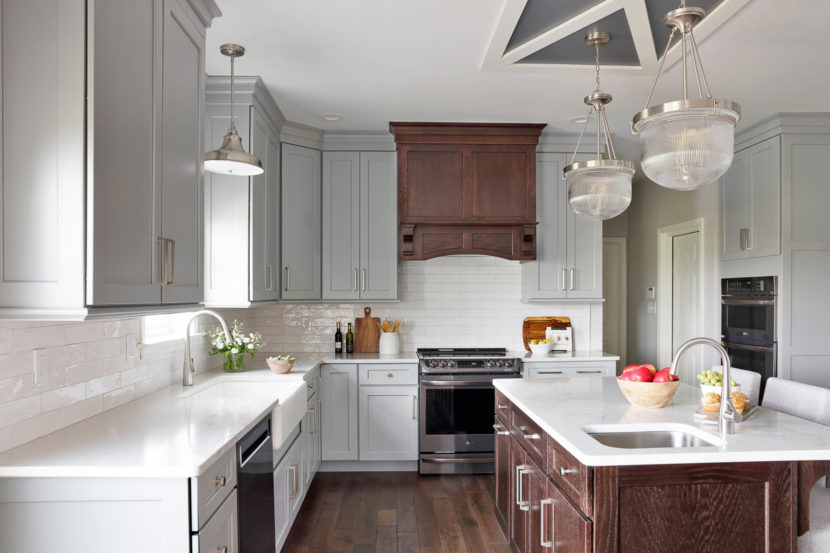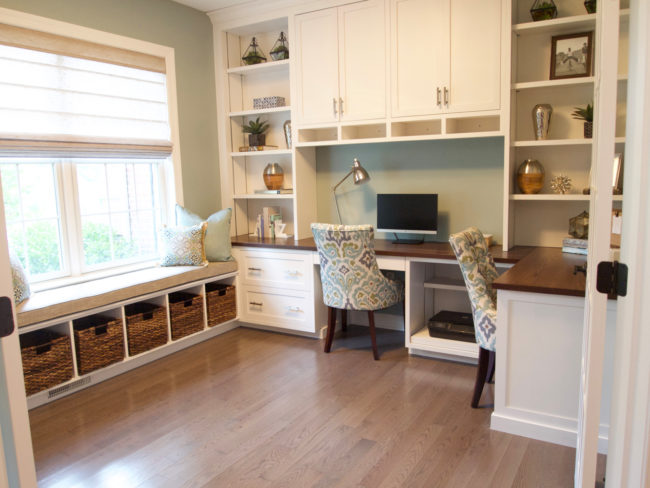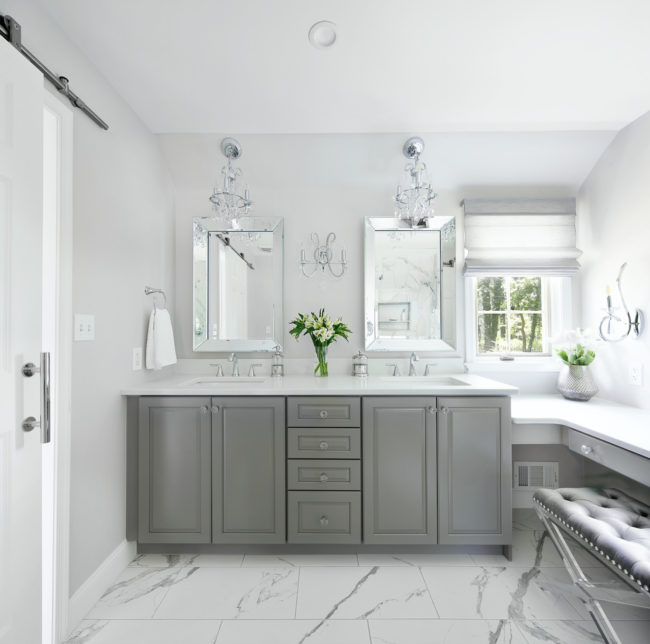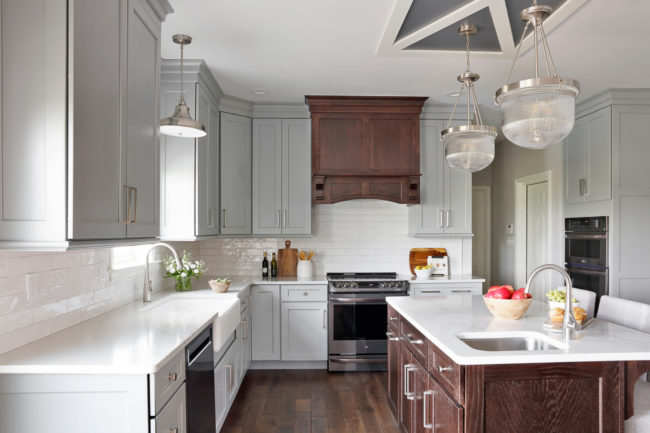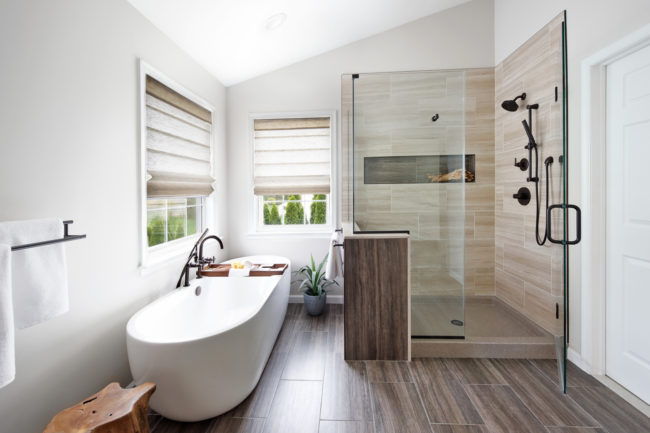Hello design lovers!
Do you find your bedroom soothing? Is your family room relaxing? Is your kitchen a place of gathering and enjoyment? If you find that any of these rooms as spaces are leaving you feeling depressed, frustrated, or anxious, then its time to bring ‘wellness’ into your home! Lets talk about how Wellness Design is the most important change you can make to your environment.
What is Wellness Design?
When people used to think of ‘wellness’, it involved taking care of yourself physically, and typically included diet and exercise. Then the wellness topic trend expanded to include mind set issues; our social circles, how we treat ourselves, slowing down, dealing with changing technology and social media.
Research has now shown ‘wellness’ is an important part of our everyday environment. All of these physical, mental, and social issues can get better or worse, through our living and working spaces.
Yep, you can work on your wellness in all of those arenas, but if your home is not nourishing your body and soul, you need to change it. If the place you work at is not stimulating, you need to change it.
“Interior designers like us, not only design for function and style; we ALSO create spaces that increase your quality of life – we call it Wellness Design.”
And yes, being apart of change in someone’s life is both rewarding and thrilling!
Many clients who we work with do not even realize they are missing wellness. They are usually at a point where they are so frustrated with a room that they cannot even think about what it is they need to change, and they cannot stay in the space long enough to change it themselves. Their entire body language and behavior shows their discontent. That is where we come in and assist.
It reminds me of the very popular organizing whiz, Marie Kondo. She increases wellness in a person’s home by de-cluttering. She helps you get rid of physical items that do not bring joy to your life. The result is a tidier closet or organized space, sparking a positive emotion every time you enter that space, and allowing you to become physically at ease.
Businesses Use Wellness Design To Get You Thru The Door And Keep You Coming Back
Wellness centered design has been a major trend in residential and commercial dwellings the last few years. The hospitality industry is mastering this concept. Many hotels are focused on bringing ‘wellness’ to clientele thru their space planning, furniture upholstery, lighting and sounds. Restaurants are also catering to this ‘wellness’ trend by creating a cozy warmer environment while you dine there. They know you are less likely to complain about something if you are feeling relaxed and happy.
Lets look at four ways to bring wellness into your home by sharing easy tips you can incorporate right now!
-
Wellness In The Home Thru Sense of Smell
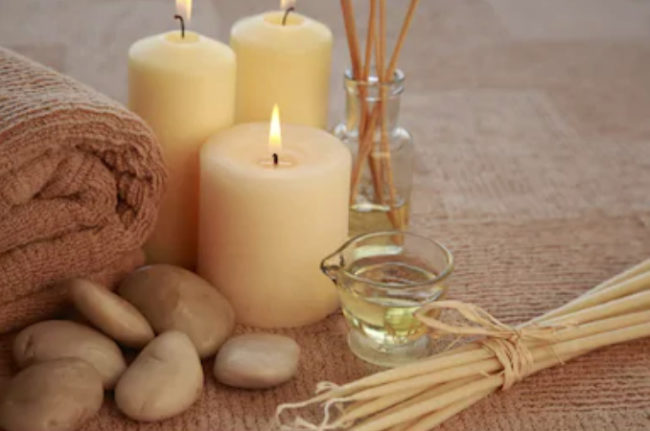
Eighty percent of what we taste is what we smell. Think about that the next time you walk into McDonalds. Oh the power of scent! Scents can boost your well being, and more and more studies prove that it influences our mood. Our emotions are tied to scents. We smell something that reminds us of a memory, and it influences our mood. When you smell chocolate chip cookies you get a smile because it reminds you of baking with your mom as a kid. You may not even realize why you are attracted to a particular scent. If there is a pine smell, you may feel happy because you love being outdoors. I get happy when I smell coconut because it reminds me of Hawaiian Tropic suntan oil I used as a teenager. Therapists are using aromatherapy as medicine to help people!
You can create your own well being by choosing the perfect scent of candles, oils, and scented soaps, but don’t overdue it.
For homework after you read this, go to your local retailer that sells candles, oils and soaps, like Bath & Body Works, and try out their candle scents. Which one makes you feel calm? Which one makes your heart beat a little faster and gives you energy?
To learn more very interesting facts and new discoveries on the use of smell, check out this link. https://www.globalwellnesssummit.com/2019-global-wellness-trends/medi-scent-fragrance-makeover/.
-
Wellness In The Home Thru Lighting
Saddlecreek Project
Lighting in a room can affect your brain power and your sleep schedule. Too much, too little, and not the right tint can be a major decrease in wellness, and you probably don’t even know it. It should not be an afterthought when designing a room.
Here are some quick tips!
Natural light is great at boosting wellness: If you have windows that bring in natural light, keep them clutter free with simple window treatments that can be opened or closed with ease. If you have trees or bushes blocking the windows, consider cutting them back to get more light and solar warmth! Working near natural light is energizing. The natural light not only boosts your mood, but increases your body’s production of vitamin D and stabilizes your wake and sleep cycle.
If you are thinking of renovating, opening walls, or a stairwell, you should get more natural light in, and make the space feel lighter, brighter, and happier!
For artificial light, we layer rooms with three lighting sources: 1. ambient, 2. task, and 3. accent
– Ambient lighting becomes my ‘natural light’ in a room. I typically use a variety of ceiling lights, recessed, and chandeliers.
– Task lighting is used to light up a work area or reading area. I typically use wall sconces and hanging pendants for bringing light closer to a work surface, or mirror. This can also include lamps!
– Accent lighting is used to give a dramatic affect and could be lighting in a bookcase, or over a work of art. This can include wall sconces or landscape lights.
IMPORTANT: Blue light is a color in the visible light spectrum that can be seen by the human eye. It is a short wave length, and that means it pushes out a lot of energy. Sunlight is the main source of blue light. Blue light not only comes from natural light, but is made through artificial including fluorescent and LED lighting, flat screen televisions, computers, electronic notebooks, smartphones have large amounts of blue light.
Short wave blue light can increase our alertness and our mood during the day, but if used over long periods of time, it can cause eye strain, headaches, and fatigue. If we are using electronic devices for long periods of time, this can be bad for our wellness.
At night we need to turn the blue light off so we can recover from the day, and fall asleep. Turn those computers, phones, and other electrical devices off way before going to bed. You can also purchase blue light filter glasses to protect your eyes.
Get the best light in multi-functional rooms: Install multiple sources of bright light that can be manipulated in rooms that require task lighting, specifically the bathroom and kitchen, so they are not as stressful.
Layering your lighting! In the bathroom use wall sconces about sixty inches from the floor to give you the best space to apply make up and shave; use pendant lighting for soft mood lighting at night.
Oakwood Trail Project
In the kitchen, layer it up as well! Recessed lights are great around the cabinet perimeter, hanging pendants above your island and also over a sink, and under cabinet lighting allow for easy food prep, and the ability to decrease the amount of light for gatherings with friends and family.
PRO TIPS:
1. LED bulbs are becoming a very popular choice these days because they last a long time, are not hot to the touch, and come in a variety of temperatures. I like LEDs that replicate the warmth of natural lighting in a soft white temperature. You can also get them in a daylight temperature. The color temperature of the light is measured in Kelvins. The higher the Kelvins, the cooler the light. You can find this information on the bulb package.
2. Use dimmers on most wall and ceiling lights because it allows you to adjust the brightness of the bulbs and create a mood that works for you!
3. Mirrors are great for bouncing off light in a room that needs a little more brightness.
For more information on bulb types read this https://www.hgtv.com/design/decorating/design-101/light-bulbs-know-the-different-types.
-
Wellness In The Home Thru Color
What colors should you use in your home? It depends on the activity you do in that space. Greens, blues, and neutral tones are calming colors. Reds and yellows are stimulating. I always say that color preference is very personal and should not solely depend on the type of room we are working on. This is because color can cause a different emotional response in each one of us. I may feel bored and tired in a blue room, but you feel relaxed and upbeat.
To find the color that works for you, walk into different spaces, be aware of how you are feeling, and take note of the rooms’ color.
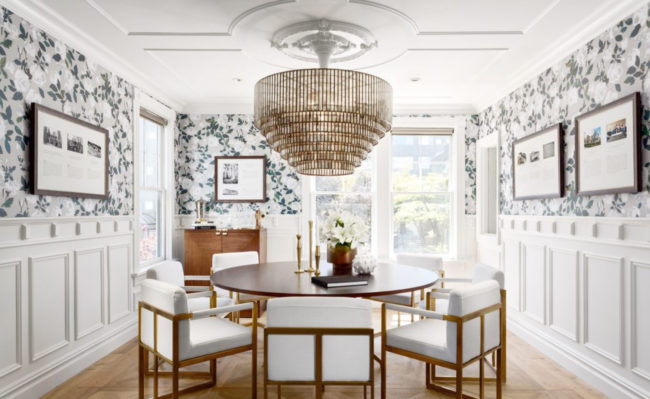
House of Bohn http://www.houseofbohn.com/portfolio-item/mccleery-magee-sales-gallery/
Lets talk wallpaper! It can bring a fun pop of color and pattern, creating a light hearted or dramatic mood. Where-as paint can be flat, wallpaper can bring in an array of movement on the walls, or ceiling! It heightens our senses.
-
Wellness In The Home Thru The Use of Nature
Grandy Project
Have you heard of The Biophilia Hypothesis? It suggests that humans possess an innate tendency to seek connections with nature and other forms of life. This can be done through sounds, smells and the overall feeling of nature. If you open your windows you can hear birds chirping, smell the trees and plants, and feel the wind and fresh air. Together, this evokes a calming affect.
Bring in plants to reconnect with nature. There are so many indoor houseplants to choose from! They purify the air and promote a peaceful environment. Succulents are pretty easy to take care of. Also, you can grow herbs in your kitchen! Those have a beautiful fragrance and are handy when cooking!
If you missed the segment of Shosh and Eve talking about wellness in your home click here.
